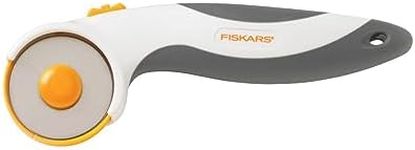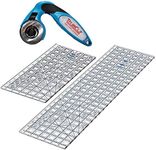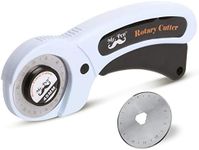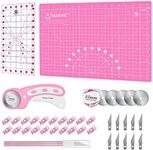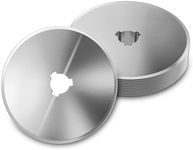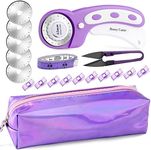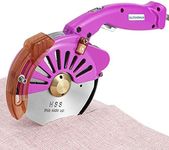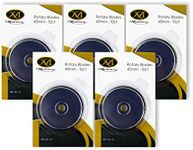Buying Guide for the Best Quilting Rotary Cutters
Choosing the right quilting rotary cutter can make your quilting projects easier, faster, and more precise. Rotary cutters are essential tools for cutting fabric smoothly and accurately, and the right one can help you achieve clean lines and reduce hand fatigue. When picking a rotary cutter, it's important to consider how you'll use it, the types of fabrics you'll be cutting, and your comfort with the tool. Understanding the key features will help you select a cutter that fits your needs and enhances your quilting experience.Blade SizeBlade size refers to the diameter of the rotary cutter's circular blade, usually measured in millimeters. This is important because it affects how easily you can cut through different layers and types of fabric. Smaller blades, like 28mm, are great for detailed work and tight curves, while medium blades, such as 45mm, are versatile and suitable for most quilting tasks. Larger blades, like 60mm, are best for cutting through multiple layers or thicker fabrics. To pick the right blade size, think about the kind of projects you do most often: if you work with intricate patterns, a smaller blade is helpful; for general quilting, a medium blade is usually the best choice; and for heavy-duty cutting, a larger blade will save you time and effort.
Handle DesignHandle design refers to the shape, grip, and ergonomics of the rotary cutter's handle. This is important because a comfortable handle reduces hand fatigue and helps you maintain control, especially during long cutting sessions. Handles can be straight, curved, or have ergonomic features like soft grips or contoured shapes. Some handles are designed for right-handed or left-handed users, while others are ambidextrous. When choosing a handle, consider how the cutter feels in your hand and whether you need extra comfort or support. If you have arthritis or plan to cut for long periods, an ergonomic handle can make a big difference.
Safety FeaturesSafety features include mechanisms like blade guards, locking systems, and retractable blades that help prevent accidental cuts when the cutter is not in use. This is important because rotary cutters are very sharp and can cause injuries if not handled properly. Some cutters have automatic blade covers that engage when you release the handle, while others require you to manually slide a guard into place. When picking a rotary cutter, think about your workspace and who might have access to your tools. If you have children or pets around, or if you want extra peace of mind, look for a cutter with strong safety features.
Blade Replacement and CompatibilityBlade replacement and compatibility refer to how easy it is to change the blade and whether the cutter can use blades from different brands or types. This is important because blades will dull over time and need to be replaced to maintain clean cuts. Some cutters have simple mechanisms for swapping blades, while others may require more effort. Compatibility with different blade types, such as pinking or wave blades, can add versatility to your tool. When choosing a rotary cutter, consider how often you expect to change blades and whether you want the option to use specialty blades for decorative edges.
Cutting CapacityCutting capacity refers to how many layers of fabric the rotary cutter can handle at once. This is important for efficiency, especially if you often cut multiple pieces at the same time. Smaller blades and lighter cutters may only handle a few layers, while larger, sturdier cutters can slice through several layers with ease. To pick the right cutting capacity, think about your typical projects: if you usually cut single layers or do detailed work, a lower capacity is fine; if you batch-cut pieces for quilts, a higher capacity will save you time.




